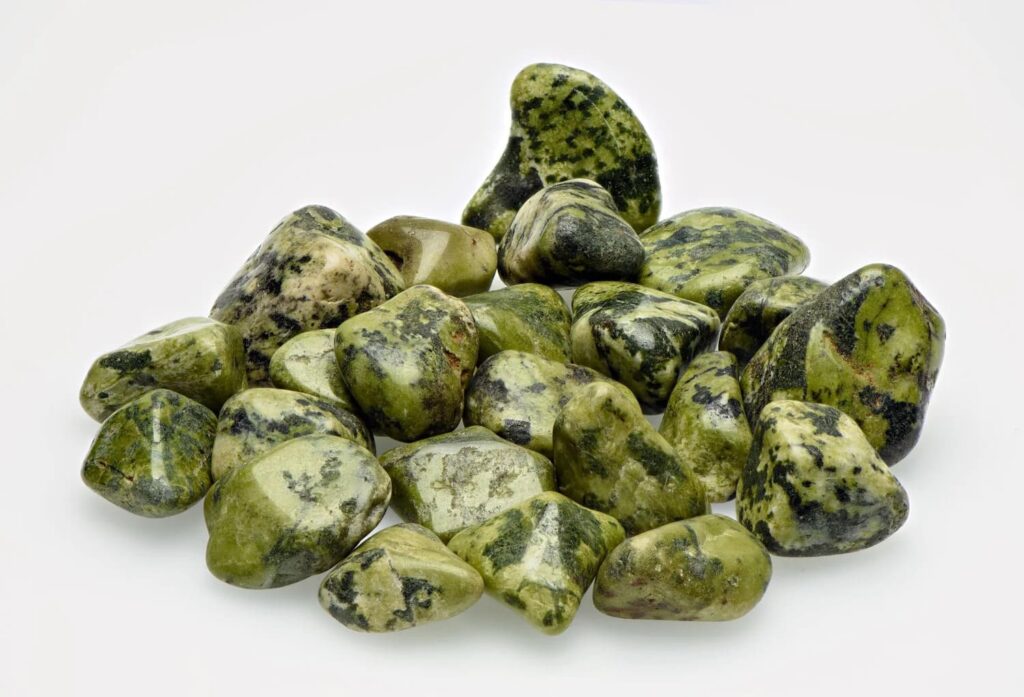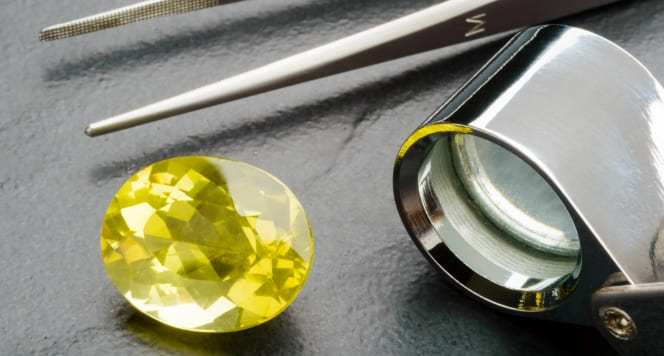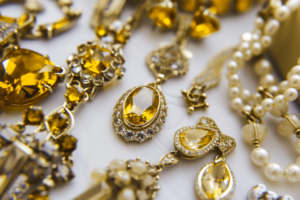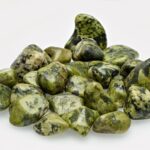Introduction
The Serpentine Stone is a natural wonder that transcends mere geological definition. Originating from intricate rock formations, this stone, with its unique composition, offers a captivating beauty that has attracted the attention of cultures and enthusiasts over the centuries.
Origin and characteristics
Serpentine stone has its roots deep within the Earth, formed by intriguing geological processes that transform peridotite into a marvel of colors and patterns. Its distinctive green hue, often associated with the serenity of nature, is the trademark that makes it instantly recognizable.
Characterized by a texture that is soft to the touch, serpentine is not just a rock; it is an artistic expression of nature itself. Its slippery surface, often compared to the skin of a snake, adds a tactile element that makes it appreciated not only visually, but also by touch.
Unique beauty
What makes serpentine stone truly special is its singular beauty. The mixture of green tones, intricate patterns and its geological uniqueness gives each piece a unique identity. In sculptures, decoration or jewelry, the stone stands out, incorporating a touch of nature and elegance into each application.
The natural beauty of the stone, often enhanced by veins of other colors, creates a visual spectacle that transcends the ordinary. The keyword “serpentine stone” resonates not just as a description, but as an invitation to explore a masterpiece sculpted by time.
This comprehensive guide will take you on a fascinating journey through the universe of serpentine stone. We’ll explore its properties, benefits, practical uses, and delve into the history of mining to fully understand this geological wonder. Get ready to discover the natural and unique beauty of this extraordinary stone.
We invite you to explore every facet of this incredible geological wonder. Read on and unlock the secrets of the Serpentine Stone!
What is Serpentine Stone?
The Serpentine Stone is a geological wonder that stands out for its unique mineral composition and intriguing origin. Deeply rooted in the metamorphic processes that shape our planet, this intricate rock deserves in-depth exploration.
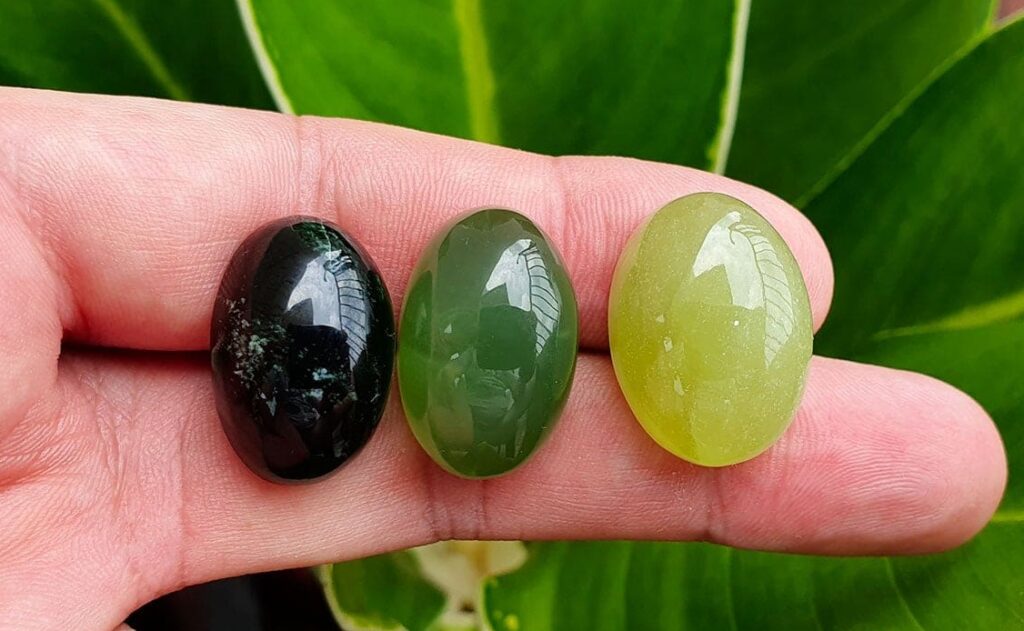
Mineral composition
The composition of serpentine stone is predominantly made up of the group of minerals known as serpentine. This group includes antigorite, chrysotile and lizardite, minerals that give the stone its distinctive characteristics. The predominance of these minerals not only defines the appearance of serpentine, but also influences its physical and aesthetic properties.
The keyword “serpentine stone” accurately reflects the mineral base of this rock. Over millions of years, serpentine develops from ultrabasic rocks such as peridotite. This process of metamorphism results in the formation of serpentine crystals that intertwine to create the stone’s unique texture.
Geological background
The formation of serpentine stone is a testament to the power and complexity of geological processes. Metamorphism, which occurs at significant depths below the Earth’s surface, exposes peridotite to extreme pressures and temperatures. This favorable environment gradually transforms the precursor rock, creating serpentine with its distinctive characteristics.
Throughout this process, serpentine can incorporate other minerals and elements, adding color nuances and unique patterns. Geological contextualization not only explains the origin of the stone, but also reveals the stories that are encapsulated in each mineral layer.
Gostou do artigo? Saiba mais no nosso e-book O Guia Definitivo sobre Pedras Preciosas!
Intriguing formation
The formation of serpentine stone is a fascinating phenomenon that transcends mere scientific explanation. Each vein, each pattern, tells a story of titanic pressures and extreme heat. The keyword highlights not only the mineral composition, but serves as a portal to the rich geological narrative that serpentine carries with it.
As we delve into the depths of the Serpentine Stone’s mineral composition and geological origin, we uncover the mysteries that make it truly unique.
History and Cultural Significance
The Serpentine Stone is not just a geological wonder; it carries with it a rich history and deep meanings in various cultures around the world. By exploring its traditions and symbolism, we immerse ourselves in a narrative that transcends eras and borders.
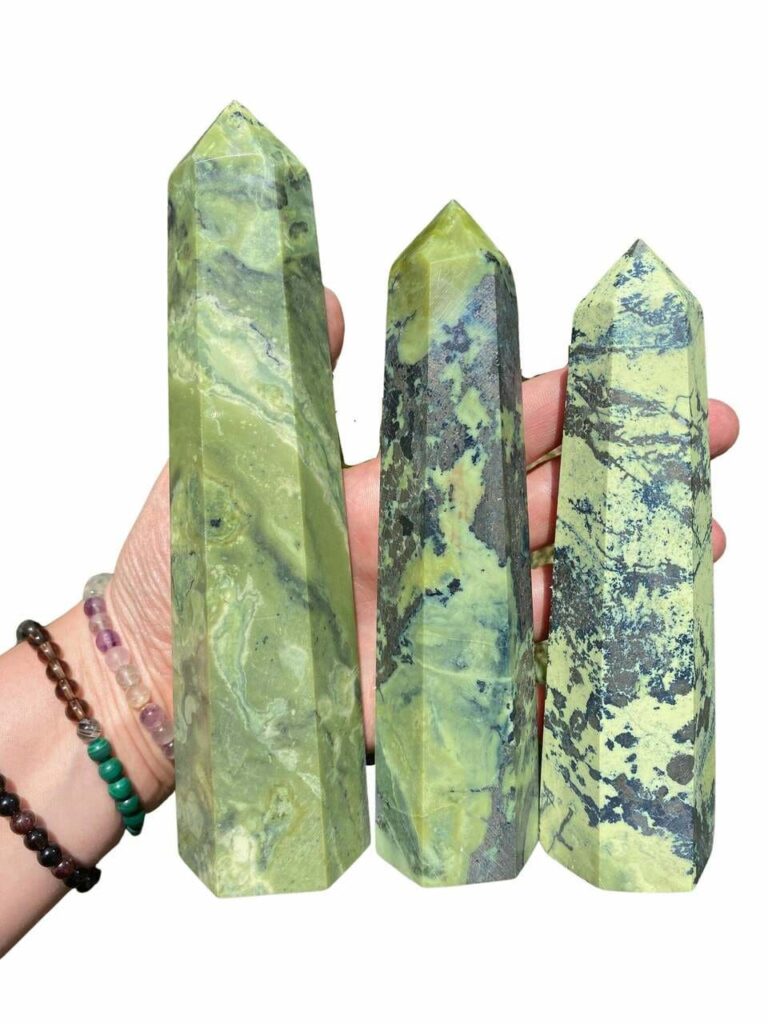
Historical use
The history of serpentine stone is intertwined with humanity, dating back to ancient times. Various cultures have recognized and valued the unique characteristics of this stone. From the Aztecs to the Chinese and Mayan civilizations, serpentine was used in sculptures, artefacts and even as an ornament in sacred buildings.
The keyword “serpentine stone” reveals a fascinating timeline of cultural interactions. The Egyptians, for example, believed that the stone had protective properties and used it in amulets and funerary ornaments. The Chinese saw it as a symbol of longevity and prosperity and incorporated it into their sculptures and architecture.
Traditions and symbolism
Each culture attributes specific meanings to the serpentine stone, creating a tapestry of symbolism that has stood the test of time. The keyword highlights not only the presence of the stone, but the symbolic richness that accompanies it.
- Protection and Spirituality:
- In various traditions, serpentine is seen as an amulet of protection against negative energies.
- Its use in spiritual rituals highlights its connection with the mystical and the sacred.
- Longevity and Prosperity:
- In Eastern cultures, the stone is associated with longevity and prosperity.
- A symbol of good luck, it is often incorporated into sculptures and decorative objects.
- Connection with nature:
- The green hue of the stone associates it directly with nature and renewal.
- In some traditions, it is seen as a symbolic link to the cycle of life.
As we explore the traditions and symbolism of the serpentine stone, we discover that it transcends its physical form, becoming a living representation of the dialogue between humanity and the earth it inhabits.
This dive into the traditions and cultural meanings of the Serpentine Stone invites you to unravel the mysteries and symbolic richness that this geological wonder carries with it.
Varieties of Serpentine Stone
The Serpentine Stone, with its diversity of types, is a geological treasure that captivates with its wealth of colors, patterns and geographical origins. As we explore these variations, we are led into a world where each type of serpentine tells its own story.

Exploring Diversity
- Classic Green Serpentine:
- Description: The best-known variety, characterized by rich shades of green.
- Distinctive Features: Can exhibit interlaced patterns and veining that add visual complexity.
- Green Serpentine with Golden Veins:
- Description: A variation with golden or yellowish veins.
- Geographical Origins: Found in specific regions, such as certain mines in China.
- Black Serpentine:
- Description: A darker variation, often associated with elegance and sophistication.
- Distinctive Features: Can exhibit subtle patterns and textures that set it apart from lighter varieties.
Specific Geographical Origins
- Serpentine from China:
- Characteristics: Varieties with varying shades, from classic green to more exotic hues.
- Historical Use: Highly valued in Chinese sculpture and traditional architecture.
- Brazilian Serpentine:
- Characteristics: Known for its rich variety of colors and veins.
- Popularity: Widely used in jewelry and interior decoration.
Variations in Patterns
- Marbled patterns:
- Description: Some varieties feature marbled patterns, resembling marble in their appearance.
- Applications: Much appreciated in sculptures and decorative elements.
- Vein patterns:
- Description: Distinct veins that run along the surface of the stone.
- Cultural significance: In some cultures, these patterns are associated with symbols of fluidity and transformation.
Subtle Complexity
The keyword “serpentine stone” reveals a subtle complexity in its variations. Each type not only differs in appearance, but also in the geological history that shaped it. Exploring these nuances adds a fascinating layer to the appreciation of this natural wonder.
As we immerse ourselves in the diversity of Serpentine Stone, we discover a spectrum of colors, patterns and stories that transform each piece into a unique masterpiece of nature.
Properties and benefits
Serpentine Stone is more than a piece of geology; it is an expression of physical and metaphysical properties that captivate both aesthetics and spirituality.
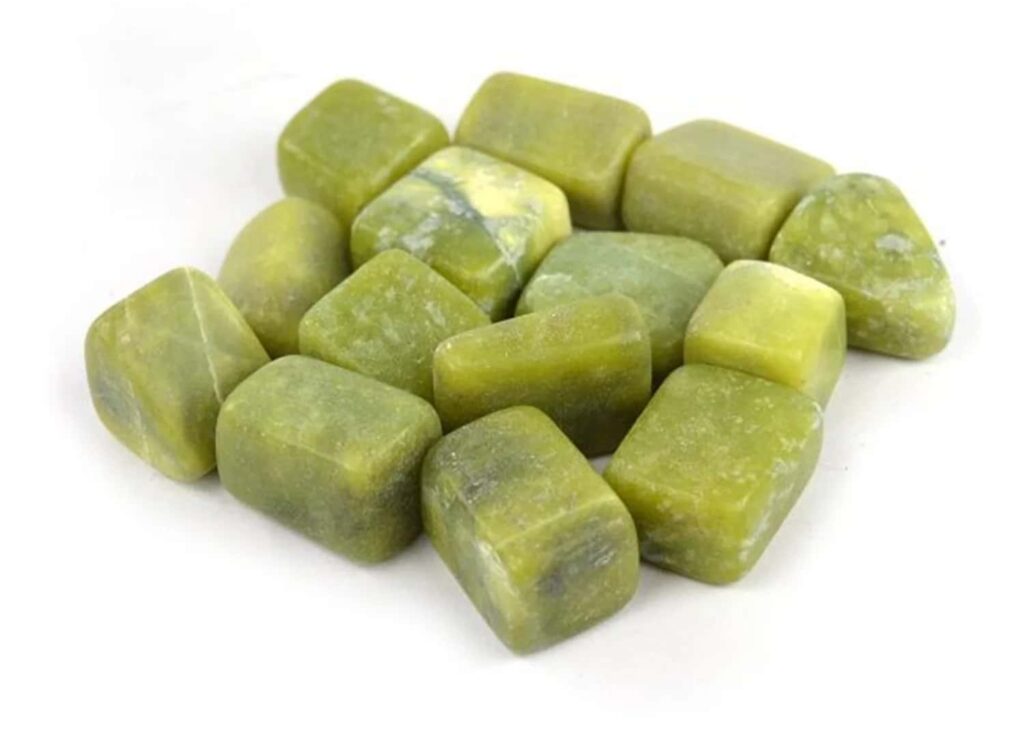
Physical and Aesthetic Properties
Visual and Tactile Description:
The beauty of serpentine stone transcends its mineral composition. Visually, it displays a wide range of green tones, from soft hues to more intense truths. Its interwoven patterns and golden veins add a unique visual complexity. Tactilely, the stone is remarkably smooth, inviting to the touch.
Ideal for sculptures and decoration:
Its physical properties make serpentine a popular choice for sculptures and decoration. Its relative malleability makes it easy to sculpt intricate shapes, while its weather resistance makes it durable for use outdoors. As a decorative material, the stone adds a touch of natural elegance.
Metaphysical and Spiritual Properties
Exploring Beliefs and Benefits:
Serpentine stone is imbued with spiritual meanings in various cultures. Associated with the vital energy of the Earth, many beliefs suggest that it can positively influence personal energy. Its use in spiritual practices aims to stimulate regeneration, renewal and transformation.
Possible effects on energy and well-being:
In terms of metaphysics, serpentine is believed to help balance the body’s energies, promoting a state of equilibrium and tranquillity. Some spiritual practitioners consider the stone to be an energy channel, positively influencing emotional and mental well-being.
The keyword “serpentine stone” reveals not only an aesthetic beauty, but also a wealth of spiritual meanings. Whether in the creation of magnificent sculptures or in the search for inner harmony, serpentine transcends its physical form, connecting deeply with spiritual dimensions.
As we explore the physical and metaphysical properties of Serpentine Stone, we discover a unique connection between matter and spirit.
Practical uses
The Serpentine Stone not only enchants as a natural wonder, but also stands out for its practical uses in decoration and jewelry, adding a touch of elegance and meaning to various environments.
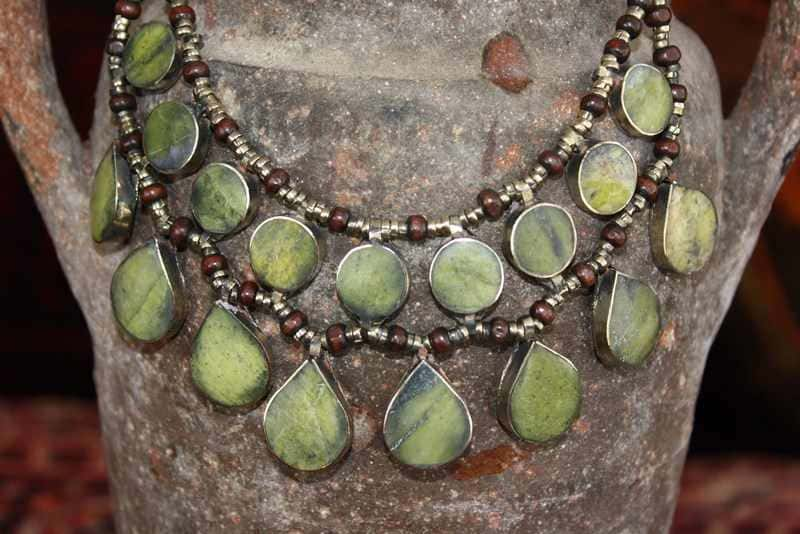
Decoration and Interior Design
Ideas and Inspirations:
- Elegant Coverings:
- Use serpentine stone as cladding on walls or floors to add a touch of luxury to interior spaces.
- The keyword highlights the versatility of the stone, making it an aesthetically pleasing choice.
- Sculptures and Ornaments:
- Incorporate serpentine-carved sculptures as accent pieces on shelves or in living areas.
- The variety of patterns and tones offers personalized options to complement different decor styles.
- Customized furniture:
- Create custom furniture, such as coffee tables or sideboard tops, to add a unique element to your interior design.
- Architectural Elements:
- Integrate serpentine stone into architectural elements, such as fireplaces or columns, to create striking focal points.
Transforming Spaces:
Incorporating serpentine stone into interior design projects not only enhances aesthetics, but also gives a sense of authenticity and connection with nature.
Jewelry and Accessories
Highlight in Jewelry:
- Rings and Pendants:
- Use serpentine stones in jewelry such as rings or pendants to add a touch of natural elegance to the look.
- The keyword highlights the timeless beauty of the stone in pieces that transcend trends.
- Earrings and bracelets:
- Explore earring and bracelet designs that highlight serpentine’s variety of shades and patterns.
- The diversity of the stone offers options for subtle styles or bold statements.
- Creative Combinations:
- Combine serpentine stone with other materials, such as silver or gold, to create visual contrasts and unique styles.
- The keyword resonates in showing how the stone can be integrated in innovative ways in jewelry creation.
- Amulets and Talismans:
- Take advantage of the metaphysical properties associated with serpentine by creating amulets or talismans for personal use.
- The keyword highlights the stone’s spiritual connection, adding a deeper meaning to the jewelry.
Styling suggestions:
The serpentine stone is not just an aesthetic choice; it is a style statement that transcends the conventional, providing unique and meaningful jewelry.
By incorporating Serpentine Stone into decoration and jewelry, we elevate not only the aesthetics, but also the connection with nature and the traditions it represents.
Mining the Serpentine Stone
The extraction of Serpentine Stone is a fascinating journey that takes place in various parts of the world, involving meticulous processes and unique challenges.

Geographical Origin
Main Regions of the World:
Serpentine stone is found in a number of regions, including:
- China: Rich in varieties, Chinese serpentine is traditionally used in sculpture and architecture.
- Brazil: Known for its color variations, Brazilian serpentine is popular in jewelry and decoration.
- United States: Some areas, such as California, have notable deposits of this stone.
Geographical and climatic context:
The regions where serpentine is mined vary in climate and landscape. From the vastness of Chinese mines to the tropical landscapes of Brazil, geography plays a crucial role in the formation and appearance of the stone.
Extraction Process
Details of the process:
- Exploration: Geologists identify potential deposits, often mapping areas with ultrabasic rocks.
- Drilling and Blasting: Specialized equipment drills into the ground and explosives are used to extract serpentine blocks.
- Cutting and Extraction: The rocks are cut into manageable blocks, which are then removed from the mine.
- Processing: The blocks are processed to reveal the beauty of the serpentine, whether for sculpture, decoration or jewelry.
Challenges in Mining:
- Respect for the Environment: Minimizing environmental damage is a constant challenge, especially in ecologically sensitive areas.
- Worker safety: The intricate nature of rock formations can increase the risks for workers.
Economic and Cultural Importance
Economic Impact:
The serpentine stone mining industry plays a vital role in local economies. It generates jobs, boosts international trade and contributes to the economic growth of entire regions.
Cultural and Historical Aspects:
The practice of mining is intrinsically linked to the cultural and historical traditions of local communities. In many cases, serpentine is not just a rock, but a valuable component of cultural identity.
Sustainability in Mining
Sustainable Practices:
- Recovery of Mined Areas: Initiatives aimed at restoring mined areas to minimize environmental impact.
- Energy Efficiency: Use of more efficient technologies to reduce energy consumption during extraction.
Environmental Impact Reduction Initiatives:
- Waste Recycling: The reuse of mining waste can reduce the amount of material discarded.
- Research into Sustainable Alternatives: Constantresearch into more sustainable extraction methods.
Mining Curiosities and Stories
Interesting anecdotes:
- Remarkable Discoveries: Some mines have revealed extraordinary pieces, including sculptures carved directly from the source.
- Historical Events: Landmark moments, such as the discovery of rich deposits, have contributed to the notoriety of serpentine stone.
Exploring the Past and Present:
- The keyword “serpentine stone” evokes not only images of polished stones, but also the mining stories that have shaped the course of entire regions.
As we delve behind the scenes of Serpentine Stone mining, we discover a complex narrative that interweaves geology, economics, culture and sustainable efforts.
Care and Maintenance
The enduring beauty of the Serpentine Stone requires specific care to ensure its preservation over time. Here are practical guidelines for keeping your stone in top condition and avoiding possible damage.
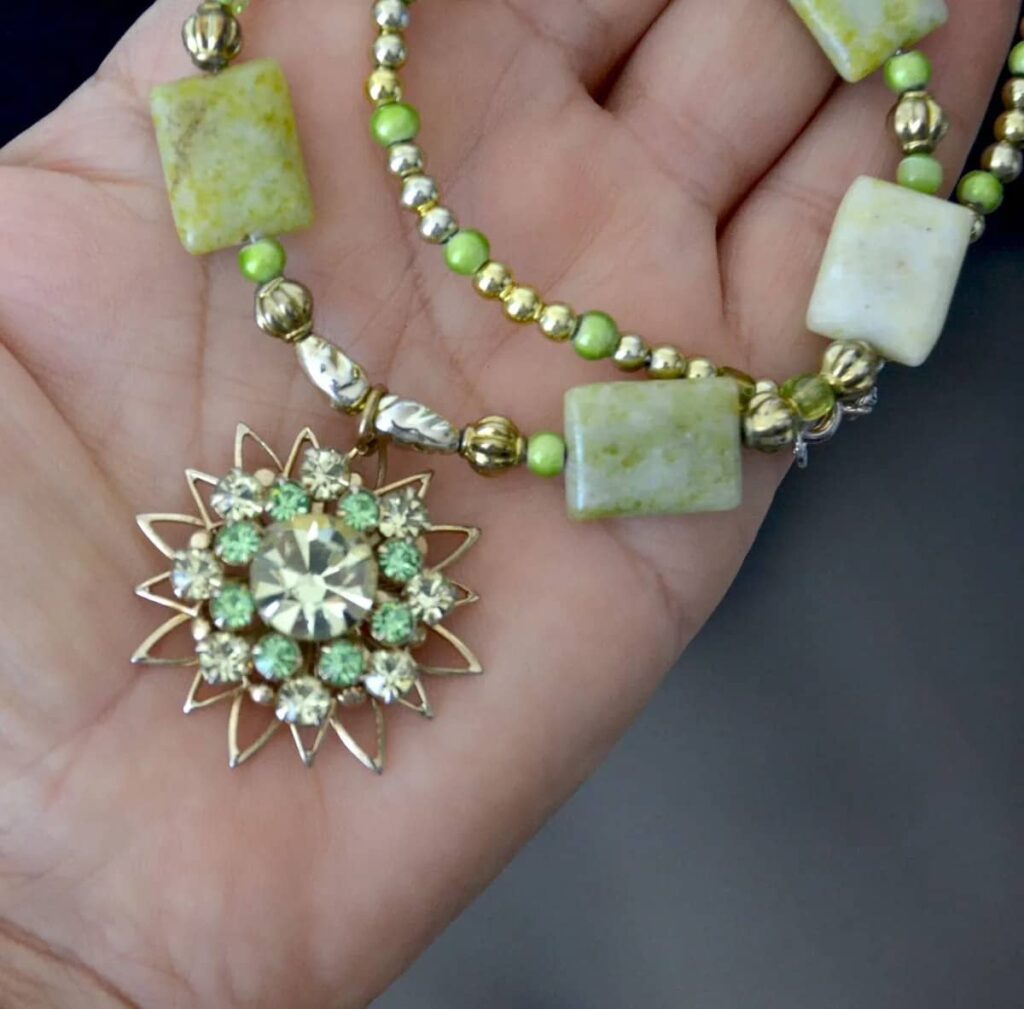
How to Care for Your Serpentine Stone
- Regular cleaning:
- Use a soft, damp cloth to gently wipe the surface of the serpentine.
- Avoid using abrasive cleaning products that could damage the stone.
- Proper drying:
- After cleaning, dry the stone completely with a dry cloth to avoid staining.
- Avoid Impacts:
- The coil is durable, but strong impacts can cause damage. Avoid hitting hard objects against the surface.
- Scratch protection:
- Use bases or holders for objects that could scratch the surface of the stone.
- Occasional sealing:
- Depending on the specific type of coil, considering applying a protective sealant may be beneficial.
- Stain prevention:
- Avoid prolonged contact with substances such as red wine or citrus juices, as they can cause staining.
Warnings about Possible Damage
- Exposure to extreme temperatures:
- Avoid placing hot objects directly on the surface of the coil, as this can cause irreversible damage.
- Aggressive Chemicals:
- Avoid using corrosive chemicals, such as acids or ammonia, which can damage the stone.
- Severe Impacts:
- Although resistant, the serpentine can chip or break with extreme impacts. Take precautions to avoid falls.
- Wear and tear from overuse:
- Heavy traffic areas can eventually wear down the surface of the stone over time.
- Preventive Maintenance:
- Regularly inspect the stone for signs of wear or damage, taking corrective action when necessary.
By following these care and maintenance guidelines, you will preserve the natural beauty of serpentine stone. Remember that with proper attention, this unique stone can be enjoyed for generations, maintaining its timeless elegance.
Find out how to preserve Serpentine Stone to ensure that its natural beauty remains unchanged over time.
Conclusion
At the end of this comprehensive guide to the Serpentine Stone, it is clear that we are dealing with a natural wonder that transcends its mere mineral composition. Let’s recap its main characteristics, explore its multifaceted uses and recall the rich history surrounding this unique stone.
Recap of the main characteristics
Serpentine stone, with its rich composition and unique variations, captivates with its diversity of colors, patterns and distinctive physical properties. Its enduring beauty, resistance and versatility make it an exceptional choice for a variety of applications.
Versatile Uses and Applications
We explore how serpentine is a striking presence in various spheres, from sculpture to jewelry and interior decoration. Its fundamental role in cultural and spiritual traditions stands out, giving the stone a value that transcends the aesthetic.
A journey through history and culture
We travel through the ages, observing how the serpentine stone has played a significant role in different cultures. Its traditions and symbolism add deep layers to its history, enriching its narrative.
Invitation to Explore Unique Natural Beauty
At the conclusion of this guide, I invite you to personally explore the unique natural beauty of serpentine stone. Whether appreciating intricate carvings, wearing elegant jewelry or incorporating this unique stone into room decor, serpentine offers a unique connection to the earth.
Discover serpentine beyond words. Feel its soft texture, observe its color variations and immerse yourself in the story it tells. Natural beauty is at your fingertips, manifested in the extraordinary serpentine stone.
As you explore the fascinating universe of Serpentine Stone with us, I invite you to go one step further and explore more. Your journey with this unique stone is just beginning, and there are engaging ways to get even more involved:
Explore More
- Share Your Experiences:
- Leave your own experiences with serpentine stone in the comments. We want to hear your stories, discoveries and how this extraordinary stone manifests itself in your life.
- Invite Friends to Discover:
- Share this complete guide with your friends and family on social media. Extend the discovery of the natural beauty of serpentine stone to those you know.
- Photos and stories are welcome:
- If you own serpentine jewelry, sculptures or decorations, feel free to share photos and tell the story behind them. Each piece is unique, as are the experiences related to it.
Get involved in the community
Take an active part in the community that appreciates serpentine stone. By sharing your experiences, you contribute to a richer understanding of this natural wonder.
Discover, share and connect with other serpentine stone lovers. Together, we can deepen our appreciation for this unique geological wonder.
Transform Your Space with Serpentine Energy
Frequently Asked Questions about Serpentine Stone: Everything You Need to Know
Where is serpentine stone taken?
Serpentine stone is mined in various regions of the world, including the United States, Canada, China, South Africa, Italy and Brazil.
In which state of Brazil is serpentine stone mined?
Serpentine stone is mined in several Brazilian states, most notably Minas Gerais, Espírito Santo and Bahia.
What is serpentine stone used for?
Serpentine stone has many uses, from sculptures and interior decoration to jewelry. It is also associated with metaphysical and spiritual properties.
What types of serpentine stone are there?
There are several varieties of serpentine stone, each with unique characteristics. Some include green serpentine, black serpentine and antigorite serpentine.
What is the origin of serpentine stone?
Serpentine stone has an igneous or metamorphic origin, forming from geological processes over time.
What is serpentine stone?
Serpentine stone is a rock composed mainly of serpentine minerals. Its coloration, patterns and physical properties vary, making it unique.
What is the material of serpentine stone?
The main material of serpentine stone is minerals from the serpentine family, such as antigorite, lizardite and chrysotile.
How do I clean serpentine stone?
Clean serpentine stone with a soft, damp cloth, avoiding abrasive products. If necessary, use a specific sealant to protect the surface of the stone.
Discover the World of Gems: Introductory Gemology Course!


